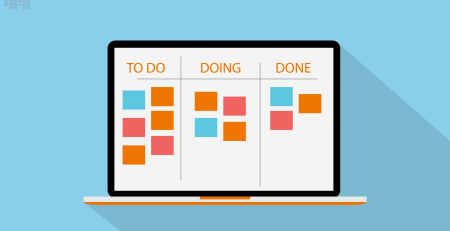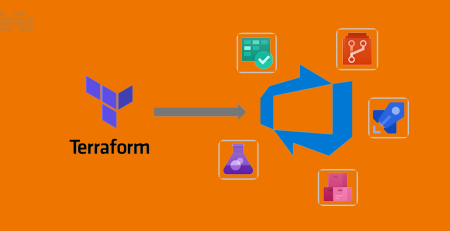Who Does What in the Software Development Life Cycle
Introduction
A process for designing, creating, and maintaining software is called the software development life cycle (SDLC). Phases like planning, analysis, design, development, testing, deployment, and maintenance are typically included. The objective of the SDLC is to make certain that top-notch software is created while also adhering to accepted standards and best practices. This software must satisfy the needs of the end user. The specific phases and activities of the SDLC may vary depending on the methodology used, such as waterfall, agile, or DevOps.
Roles and responsibilities are essential in software development because they make sure that each team member is aware of their specific contributions to the project as well as the team’s overall objectives. Roles and responsibilities that are clearly defined can boost productivity, enhance communication, and lower the possibility of mistakes or misunderstandings. It is simpler to manage the project, meet deadlines, and deliver high-quality software when everyone on the team is aware of their responsibilities and how their work fits into the bigger picture. Additionally, by giving the appropriate roles and responsibilities to the appropriate individuals, you can make sure that the team is prepared to handle the particular requirements and difficulties of the project. Successful software development projects require efficient roles and responsibilities in general.
Key Roles in the Software Development Life Cycle
Project Manager
The Project Manager (PM) is a key role in the software development life cycle, responsible for overseeing the project from start to finish. Some of the key responsibilities of the PM include:
- Planning: developing a project plan that outlines the scope, timeline, budget, and resources needed to complete the project.
- Communication: keeping stakeholders informed of project progress, risks, and issues, and facilitating communication between team members.
- Risk management: identifying potential risks and developing strategies to mitigate them.
- Resource management: ensuring that the team has the resources they need to complete the project, including personnel, equipment, and software tools.
- Quality control: monitoring the quality of the deliverables and ensuring that they meet the requirements and standards set out in the project plan.
- Team management: includes giving members of the team direction and guidance, making sure they are aware of their roles and responsibilities, and resolving conflicts as they occur.
The project manager (PM) is essential in making sure the project is finished on schedule, within budget, and to the satisfaction of all stakeholders. They must have the capacity to handle conflicting demands and adjust to shifting conditions while upholding a high standard of professionalism and communication throughout the project. A strong leader, communicator, and problem-solver who can work cooperatively with other team members to accomplish project goals are essential skills for a successful project manager.
Business Analyst
A Business Analyst (BA) is a key role in the software development life cycle, responsible for understanding the business needs and requirements of the project and translating them into technical specifications for the development team. Some of the key responsibilities of the BA include:
- Requirements gathering: working with stakeholders to understand their needs and requirements for the project.
- Documentation: creating and maintaining documentation that outlines the requirements and specifications for the project, including use cases, user stories, and functional requirements.
- Analysis: analyzing the requirements to identify any gaps or conflicts and working with stakeholders to resolve them.
- Communication: working closely with the development team to ensure that they understand the requirements and specifications, and facilitating communication between the team and stakeholders.
- Testing: working with the Quality Assurance team to ensure that the software meets the requirements and specifications set out in the project plan.
The BA plays a crucial role in ensuring that the software meets the business needs and requirements of the project, and that the development team has a clear understanding of what is expected of them. They must be able to work collaboratively with stakeholders, project managers, and developers to ensure that the project is completed successfully. A successful BA must have strong communication skills, attention to detail, and the ability to manage multiple priorities and adapt to changing circumstances.
Developer
A Developer is a key role in the software development life cycle, responsible for writing code and creating software solutions that meet the technical specifications and requirements of the project. Some of the key responsibilities of the Developer include:
- Design and development: designing and developing software solutions that meet the requirements and specifications set out in the project plan.
- Testing: writing and executing unit tests to ensure that the code meets quality standards and is free of defects.
- Debugging: identifying and resolving defects and issues in the code.
- Integration: integrating the software components developed by other members of the team into the larger software system.
- Documentation: creating and maintaining documentation that outlines the software components, their functionality, and any dependencies or interactions with other components.
- Collaboration: working collaboratively with other members of the team, including project managers, business analysts, quality assurance testers, and infrastructure engineers.
The Developer plays a crucial role in ensuring that the software meets the technical requirements and specifications of the project. They must have a deep understanding of programming languages, software development tools and methodologies, and be able to work collaboratively with other members of the team. A successful Developer must have strong problem-solving skills, attention to detail, and the ability to manage multiple priorities and adapt to changing circumstances.
Quality Assurance/Test Engineer
A Quality Assurance/Test Engineer is responsible for ensuring the quality and reliability of software products before they are released to the market. They work closely with software developers and project managers to identify, analyze and test defects, bugs and vulnerabilities. Some of the key responsibilities of a Quality Assurance/Test Engineer include:
- Developing and executing test plans, test cases and test scripts to ensure software products meet requirements and functional specifications.
- Collaborating with software developers to identify and isolate defects, bugs and vulnerabilities in the software.
- Reporting and tracking defects, bugs and vulnerabilities in issue tracking systems.
- Analyzing and interpreting test results to identify trends, patterns and potential areas for improvement.
- Documenting testing procedures, test results and software defects to ensure traceability and reproducibility of issues.
- Participating in code reviews and providing feedback to software developers to improve code quality and maintainability.
- Ensuring compliance with software development best practices, coding standards and industry regulations.
To be successful as a Quality Assurance/Test Engineer, you should have strong analytical skills, attention to detail, and excellent communication skills. You should also have a solid understanding of software development life cycle (SDLC) and software testing methodologies. Additionally, experience with automated testing tools and scripting languages is highly desirable.
Operations/Infrastructure Engineer
An Operations/Infrastructure Engineer is responsible for ensuring the availability, reliability, and performance of an organization’s IT infrastructure. They work closely with software developers, network engineers, and system administrators to design, implement, and maintain the infrastructure that supports an organization’s applications and services. Some of the key responsibilities of an Operations/Infrastructure Engineer include:
- Designing and implementing IT infrastructure, including servers, storage, network devices, and other hardware components.
- Ensuring the availability, reliability, and performance of infrastructure components by monitoring, troubleshooting, and resolving issues in a timely manner.
- Managing the deployment and maintenance of software applications and services on the infrastructure.
- Collaborating with other teams to develop and implement disaster recovery and business continuity plans.
- Ensuring compliance with IT security policies and regulations by implementing security controls and conducting security audits.
- Automating infrastructure deployment and maintenance processes using scripting and configuration management tools.
- Providing technical support and guidance to other IT staff members and end-users.
To be successful as an Operations/Infrastructure Engineer, you should have strong technical skills in server administration, network engineering, and storage management. You should also have experience with virtualization technologies, cloud computing platforms, and containerization. Additionally, excellent problem-solving skills, strong attention to detail, and effective communication skills are essential for this role.
Collaboration and Communication
Collaboration and communication are crucial skills in almost any role, but they are particularly important in technology and IT-related roles. Here are some tips on how to improve your collaboration and communication skills:
- Listen actively: When communicating with others, it is important to listen carefully to what they are saying. Avoid interrupting them and ask questions to clarify any points that you don’t understand.
- Be clear and concise: When communicating your ideas or providing instructions, be clear and concise in your language. Avoid using jargon or technical terms that others may not understand.
- Use collaboration tools: Collaboration tools such as project management software, instant messaging, and video conferencing can help facilitate communication and teamwork. Be sure to use these tools effectively and keep all relevant team members informed.
- Foster a positive team environment: Building strong relationships with your colleagues can help promote a positive and productive team environment. Be supportive, respectful, and collaborative with your colleagues to build trust and rapport.
- Practice empathy: Put yourself in the shoes of your colleagues and try to understand their perspectives and concerns. This can help you communicate more effectively and build stronger relationships with your colleagues.
- Give and receive feedback: Regular feedback is essential for continuous improvement. Be open to feedback from your colleagues and be willing to provide constructive feedback to others.
- Be open-minded: Be willing to consider different ideas and perspectives, even if they differ from your own. This can help promote innovation and creativity within the team.













Leave a Reply